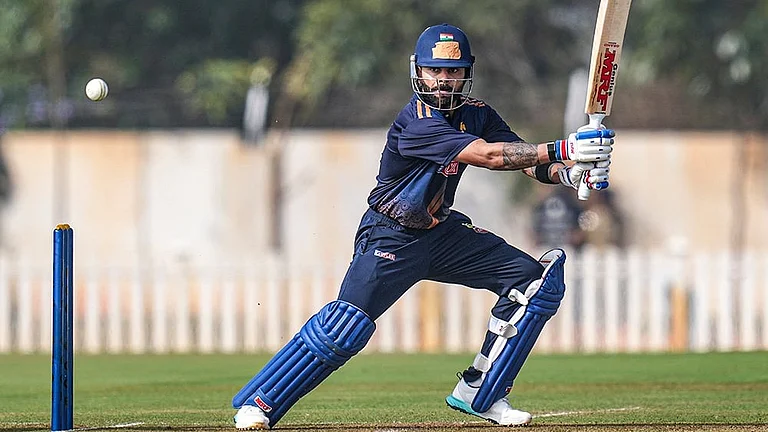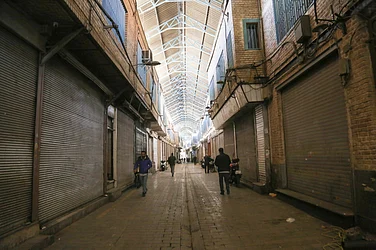For the past few years, the government has been claiming that Zojila road is on its way to an early opening.
On March 17, the Srinagar-Leh road was thrown open for vehicular traffic after it was closed in January due to heavy snowfall. As per the officials, the route was opened in record time of just 68 days this year.
However, on April 17, the road got blocked after avalanches occurred at several places along the Zojila Pass, leading to the closure of the traffic. The road was then closed for around 12 days and hundreds of people and vehicles were stranded there. The officials say inclement weather and continuous snowslides were creating hurdles in clearing the road.
While engineers are now working on Asia’s longest bidirectional Zojila Tunnel, the work this year suffered from two deadly snow avalanches in January, which led to the death of two workers of the construction company Megha Engineering and Infrastructure Ltd (MEIL) and forced the company to move its 1,000 workers out the area for the safety reasons.
Specifications of Zojila Tunnel
The contract to the MEIL was awarded on October 1, 2020, and the work on Zojila Tunnel connecting Jammu and Kashmir with Ladakh commenced in April 2021.
The Zojila Tunnel will be a two-lane highway 9.5 meters wide and 7.57 meters high in the shape of a horseshoe. The New Austrian Tunnelling Method (NATM), an advanced technology, is being used.
The length of the tunnel is 14.15 km, which is India’s longest road tunnel and Asia’s longest bidirectional tunnel. Several bridges are being constructed on this route and these construction works are going at a brisk pace.
How did the Zojila Tunnel project start?
The Government of India conceived the idea of the Zojila Tunnel in 2005 to have all-weather connectivity with Ladakh as the then-UPA government felt all-weather connectivity to Ladakh was a strategic necessity. The government started exploring the possibility of the tunnel and handed over the project to the Border Roads Organisation (BRO) in 2013.
In 2016, the Bharatiya Janata Party (BJP)-led NDA government raised funds and floated bids but one player came forward under build-operate-transfer (BOOT) mode. The concerned agency, however, failed to carry out the work and the project stopped for a few months. Then in 2020, the Government of India came up with a new design and the work was allotted under EPC mode where a contractor has to design, construct, and maintain the tunnel and funds would be provided by the government.
The deadline to complete the project is 2026.
The strategic Zojila Tunnel project will contribute to the integrated development of the Jammu and Kashmir and Ladakh regions. Engineers working on it say that constructing the Zojila Tunnel in the Himalayas is a very tough task as they say the Himalayas are very fragile mountains.
Officials say MEIL is executing this project with the latest technology due to the peculiar atmospheric conditions on par with European standards along with an automatic lighting facility, emergency lighting facility, message signalling, emergency telephone, and radio.
The Srinagar-Leh road remains closed for six months. Since the abrogation of Article 370, the authorities claim that they are keeping the road open up to January and reopening it in March but the frequent closures after landslides and inclement weather show that keeping the road open continues to be a tough task. Zojila Tunnel is the solution to these difficulties. Once the tunnel completes, the road to Ladakh will be all-weather.
How is the Zojila Tunnel project being carried out?
The entire work is divided into two divisions in a 33 km span. The first division consists of development of an 18.5-km highway. It contains two tunnels — the first one is 435 meters long and the second has the length of 1,950 meters. The second division involves the construction of the Zojila Tunnel of 14.15 km into a two-lane highway with 9.5 meters width and 7.57 meters height in a horseshoe shape.
Advanced technology called Austrian Tunnelling Method (NATM) is being used in this work and it is the first of its kind in the country.
Once this tunnel is completed, travelling between Ladakh and Srinagar would be possible throughout the year. The present travelling time between these cities is three and a half hours. It is expected to be reduced to 15 minutes after the tunnel is completed.


























